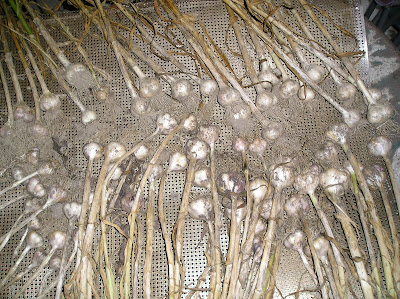 |
| MG Bill Dorman on Cole Crops |
Growing
cole crops (Brassica oleracea) was the subject of today's talk, given by Bill Dorman.
Cabbage, cauliflower, broccoli, Brussels sprouts and kale make up a group of cool season vegetables known as cole crops. The word "cole" means stem and has nothing to do with the fact that these vegetables are tolerant to "cold." They are hardy plants and grow best in the spring and fall.
Leafy vegetables are not considered to be cole crops, but are of best quality when harvested under moderately cool temperatures, similar to cole crops. Spring and fall plantings are recommended. Leafy vegetables include turnip and mustard greens. Vegetables that can be planted now are broccoli, cabbage, endive, kale, mustard greens, kohirabi, lettuce, spinach, radish, celery, leek and turnip.
Now is the time to plan for a Fall and Winter vegetable garden. Bill is teaching a full 2 hour workshop next Thursday, July 12th at 6:30 p.m. on the subject.
Out in the garden, it's Harvest Time! First payoffs for all our hard work coming in! We were able to harvest beans, peas, yellow and green squash (zucchini), beets, lettuce, swiss chard and cucumbers. There were very few weeds and they were pulled. Tomatoes were growing taller and had to be tied. Turnip seeds were separated from the husks and planted in the no-till garden.
 |
| Harvesting Beans |
 |
| Harvesting Squash |
 |
| Supporting Tomato Vines |
Harvesting of tomatoes still a week or two away.
 |
| Separating Turnip Seed |
Practicing what we preach - planting
saved turnip seed for a fall, winter, or early next spring harvest.
Here's how to
save seeds in the brassica family.
 |
| Sharing the Rewards |















































